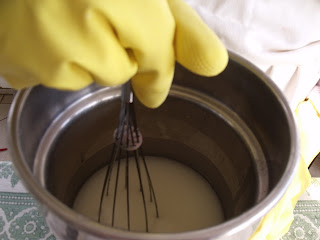The heart of the Artisan bread movement can not be found sipping infused green tea while nibbling Ciabatta at Panera. Beware of wannabe impostors, many grocery stores and chain bakeries have drawn on the popularity of Artisan bread and now make their own souped up versions with dough enhancers and a medley of other nonessential ingredients. While there are small Artisan bakeries sprinkled throughout our country and have been for decades, the true heart of Artisan baking comes from a rediscovery of traditional recipes and methods tried in our own kitchens.
This is a simple bread that contains no commercial yeast. It has a rich yeasty taste, not quite sour enough to be considered a sourdough.
Rustic Bread
This recipe is done by weight, not volume
Day 1
12 ounces Rye Starter
34 ounces bread flour
18 ounces cool water
1/2 cup wheat bran or wheat germ
2 Tablespoons sea salt
Combine all ingredients, knead 5 minutes, rest 20 minutes
Knead 5 minutes
Turn into an oiled bowl, cover and ferment at room temperature 4 hours
Shape boules, turn into floured basket cover with plastic wrap retard overnight in the refrigerator
Day 2
Remove baskets from the refrigerator and replace the plastic wrap with a proofing cloth to avoid condensation
Proof at room temperature 6 hours of until internal temperature of the dough is 66F
Turn basket onto a cornmeal dusted baking sheet, score the top of the boule
Bake in a 400F oven for 35 minutes until well browned

















